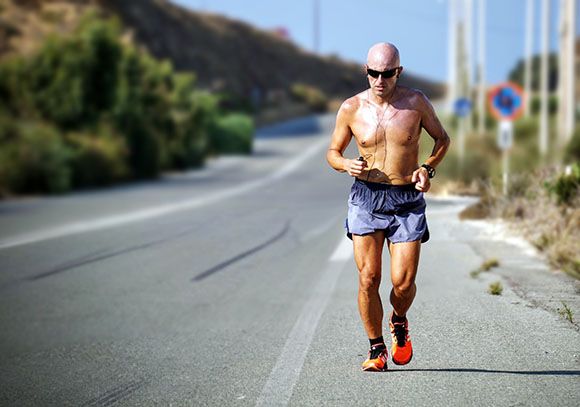What is ITB syndrome, and why do runners get it?

If you’re a runner, you’ll already be aware of the aches and pains that come with overdoing it. If you’re starting to feel twinges around the outside of your knee, you may be suffering from ITB syndrome, or iliotibial band syndrome, to give it its full name. You might also hear it be called iliotibial band friction syndrome.
What is it?
If your knee pain is mostly occurring around the sides of your knee, it’s entirely possible that you’re suffering from ITB. It’s a type of repetitive strain injury, but if ibuprofen isn’t stopping it, it’s one which you need to seek help.
A band of connective tissue goes from the outside of your hip down to the outside of your knee. This is called the iliotibial band. When this connective tissue becomes inflamed or tight, it’s called iliotibial band syndrome. When ITB occurs, the connective tissue can’t do its job of moving and stabilising the knee, meaning any sort of knee movement, such as running or jogging, is painful.

Why do runners get it?
It’s an overuse injury, so anyone who spends much time relying on their legs could be prone to it. However, if your running style means your legs turn inwards, you’re more likely to suffer. Reasons you may not even be aware of, such as unevenly worn running shoes, running on surfaces that slope, or even just doing too much running (there is such a thing!) can cause.
Female runners also seem more likely to get ITB. This may be linked to the anatomical fact that the female pelvis is more comprehensive than its male counterpart. This gives a higher degree of rotation and adds more stress to the IT band.
How is it treated?
You may initially find yourself reaching for the painkillers, but once you’ve had an ITB injury, it’s best to seek help before the condition worsens. Going cold turkey on the running is a must. The sooner you stop, the better your chances of it not becoming a chronic condition. Look at other fitness options, such as swimming or hopping onto your bike.
A specialist chiropractor, such as our sports injury experts, will be able to aid recovery with specialist sports massage to elongate and improve the iliotibial band. They can also teach you stretches which will help to develop your strength. We also have access to high-tech medical equipment, which can make a real difference to your recovery and healing time.
There’s no need to keep suffering in silence. Wimbledon Chiropractic and Sports Injury Clinic can get you back on track and show you the best way to stop ITB from recurring.
